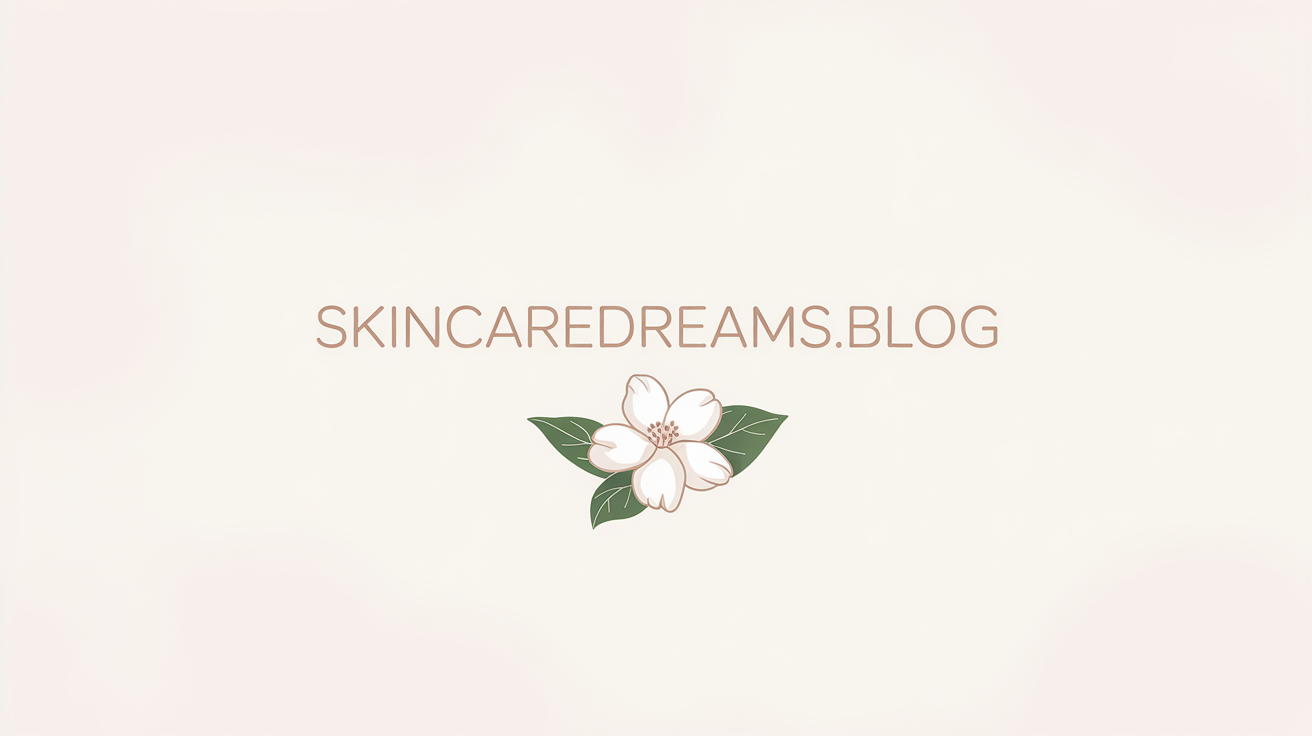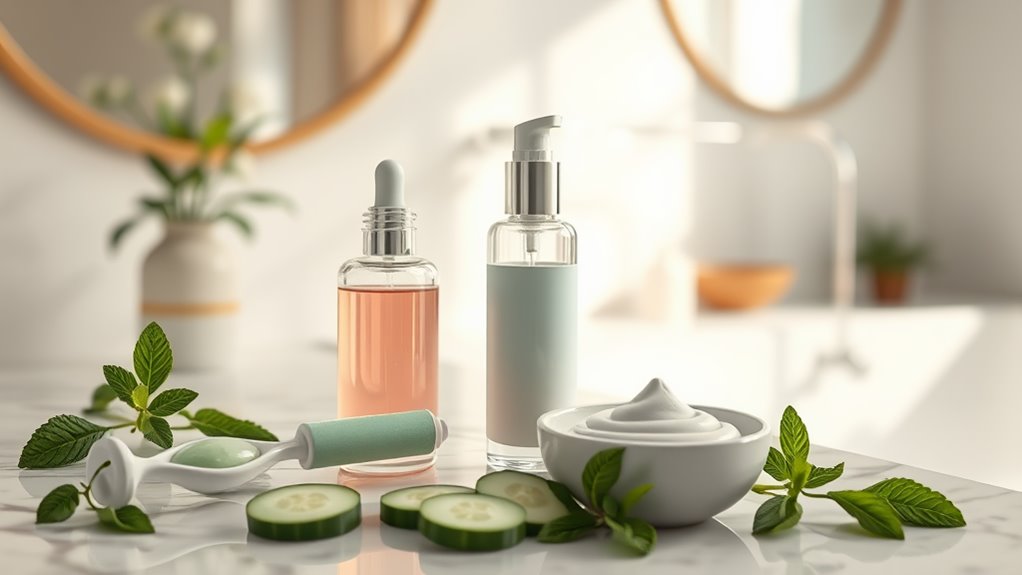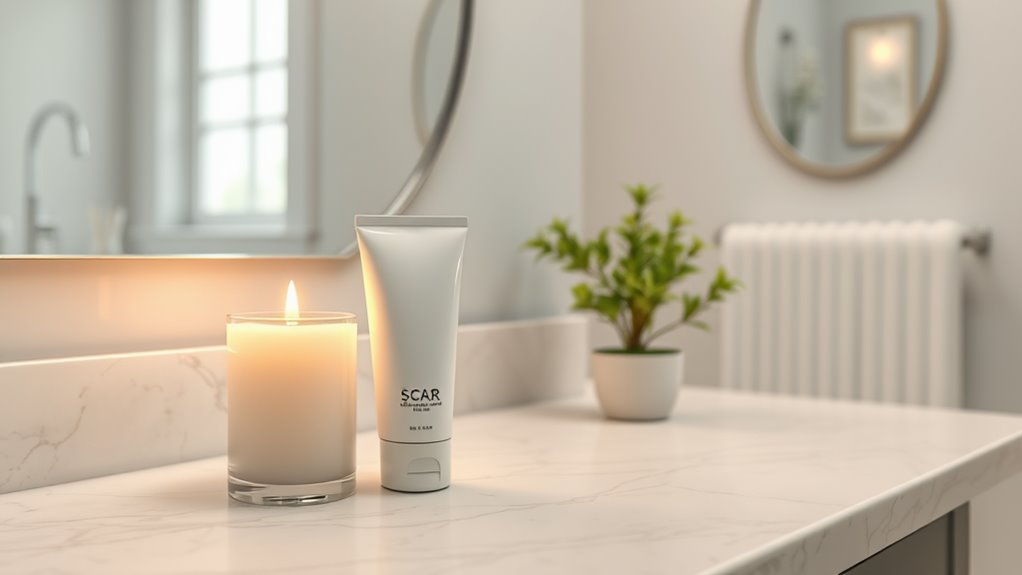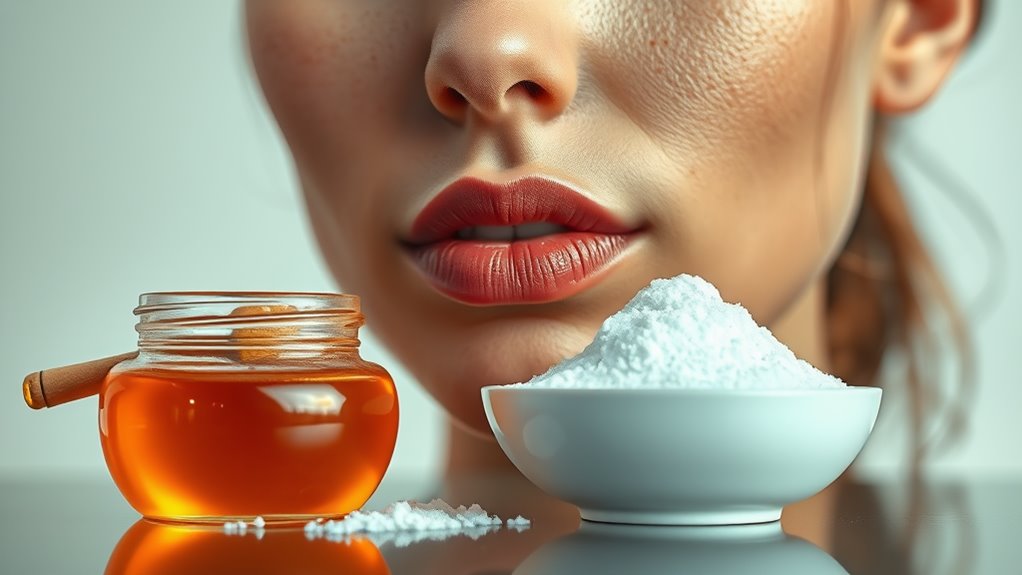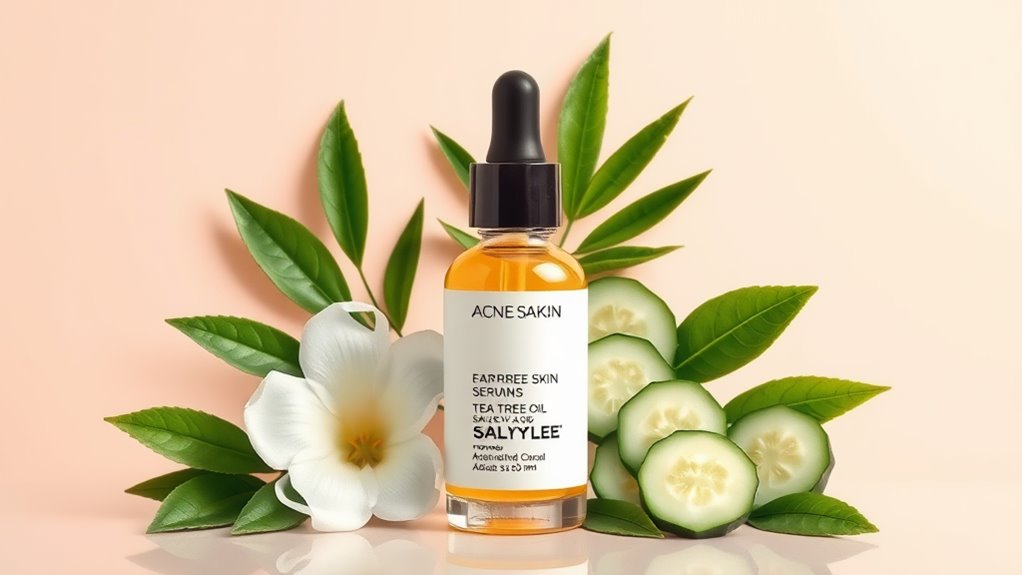Stop Squeezing Blackheads-Try This Instead!
You might think squeezing blackheads is the quickest way to clear your skin, but it can lead to scarring and infections. Instead, consider gentler options that maintain your skin’s health. There are effective, safer alternatives that won’t compromise your complexion. Curious about what those options are and how to keep your skin clear and vibrant? Let’s explore the best methods to manage blackheads without the risks.
Key Takeaways
- Use gentle exfoliating scrubs with natural ingredients to help remove dead skin cells and prevent clogged pores.
- Apply clay masks regularly to absorb excess oil and impurities, reducing blackhead formation.
- Incorporate professional treatments, like chemical peels or microdermabrasion, for effective blackhead removal.
- Establish a consistent skincare routine tailored to your skin type to maintain a balanced complexion.
- Consult a dermatologist for persistent blackheads to receive expert guidance and avoid potential skin damage from squeezing.
The Dangers of Squeezing Blackheads
While it might be tempting to squeeze those pesky blackheads for instant relief, doing so can lead to more harm than good. When you squeeze, you risk not just scarring your skin but also pushing bacteria deeper into your pores, creating an environment ripe for infection. This can exacerbate the problem and result in more stubborn breakouts.
Additionally, improper blackhead removal techniques can lead to inflammation and irritation, making your skin worse in the long run. Instead of squeezing, consider using targeted treatments like salicylic acid or professional extractions by a dermatologist.
Mastering gentle methods for blackhead removal guarantees that your skin stays healthy and clear without the risks associated with squeezing. Prioritize your skin’s health over immediate gratification.
Understanding Blackhead Formation
To really tackle blackheads, you need to understand how they form.
Excess oil production mixes with dead skin cells, leading to clogged pores.
When these pores are open to the air, they oxidize and turn dark, creating what we recognize as blackheads.
Causes of Blackheads
Blackheads form when oil, dead skin cells, and bacteria clog your hair follicles. This process often begins when your skin produces excess oil, which can result from hormonal changes, particularly during puberty or menstrual cycles.
Additionally, the natural shedding of skin cells can become irregular, leading to a buildup that traps oil and debris. Environmental factors, like pollution and humidity, can exacerbate this issue, making your skin more prone to blackheads.
Furthermore, using heavy or comedogenic products can contribute to follicle blockage. Understanding these causes empowers you to adjust your skincare routine effectively, reducing the likelihood of blackheads.
Skin Oil Production
When your skin produces too much oil, it can lead to the formation of blackheads, making it vital to understand this process.
Sebaceous glands, which are located in your skin, secrete sebum—a natural oil that keeps your skin moisturized. However, factors like hormonal fluctuations, diet, and stress can increase this oil production.
When you have excess oil, it can mix with dead skin cells, creating a perfect breeding ground for blackheads. This overabundance can also result in an imbalance in your skin’s natural ecosystem.
Understanding how your skin regulates oil is essential in preventing blackheads. By recognizing the triggers for excess oil production, you can take proactive steps to maintain a balanced complexion and minimize blackhead formation effectively.
Clogged Pores Explained
Although excess oil is a significant factor, clogged pores can also result from a combination of dead skin cells, dirt, and bacteria. Understanding how these elements interact is essential for preventing blackheads.
-
Dead Skin Cells: When your skin doesn’t shed properly, these cells accumulate, blocking pores.
-
Dirt and Debris: Environmental pollutants can settle on your skin, contributing to the clogging process.
-
Bacteria: The presence of bacteria can exacerbate inflammation, turning a clogged pore into a blackhead.
Professional Removal Techniques
If you’re struggling with stubborn blackheads, professional removal techniques can offer a safe and effective solution. Dermatologists and estheticians utilize specialized methods to extract blackheads while minimizing skin trauma. Here’s a quick overview of common professional techniques:
| Technique | Description | Ideal For |
|---|---|---|
| Manual Extraction | Uses tools to gently extract blackheads | Moderate to severe cases |
| Chemical Peels | Exfoliates skin with acids | Oily skin types |
| Microdermabrasion | Buffs away dead skin cells | Dull or uneven skin |
| Laser Therapy | Targets clogged pores with laser | Persistent blackheads |
| Extraction Facials | Combines cleansing with extraction | Overall skin rejuvenation |
These methods guarantee your skin remains healthy while effectively tackling those pesky blackheads.
At-Home Remedies for Blackhead Management
If you’re looking to manage blackheads at home, natural exfoliating scrubs and clay masks can be game-changers.
These remedies help remove dead skin cells and unclog pores effectively.
Let’s explore how you can incorporate them into your skincare routine.
Natural Exfoliating Scrubs
When it comes to managing blackheads, natural exfoliating scrubs can be a game changer in your skincare routine.
These scrubs not only help remove dead skin cells but also promote clearer pores.
Here are three effective natural exfoliating scrubs you can easily make at home:
-
Sugar and Olive Oil: Mix equal parts sugar and olive oil. Gently massage onto your skin in circular motions to slough away dead skin.
-
Baking Soda and Water: Create a paste with baking soda and water. Apply it to your nose and chin, then rinse after a few minutes.
-
Coffee Grounds and Yogurt: Combine coffee grounds with yogurt for a revitalizing scrub that minimizes blackheads while nourishing your skin.
Incorporate these scrubs into your routine for smoother, clearer skin.
Clay Mask Benefits
Clay masks offer numerous benefits for managing blackheads and can easily be incorporated into your at-home skincare routine.
First, they work by absorbing excess oil and impurities, unclogging pores effectively. This detoxifying action helps reduce the formation of blackheads. Additionally, clay masks contain minerals that nourish your skin, promoting a balanced complexion.
When applied regularly, they can improve skin texture and minimize the appearance of enlarged pores, making your skin look smoother and more refined.
You’ll also find that many clay masks have anti-inflammatory properties, which can soothe irritated skin and reduce redness.
To maximize results, choose a mask suited for your skin type and apply it weekly. You’ll soon notice brighter, clearer skin without the urge to squeeze!
Preventive Measures to Avoid Blackheads
To keep blackheads at bay, maintaining a consistent skincare routine is essential. By taking proactive steps, you can greatly reduce your chances of developing those pesky blemishes.
Here are three preventive measures you should incorporate:
-
Cleanse Regularly: Use a gentle cleanser twice daily to remove excess oil and impurities from your skin.
-
Exfoliate Weekly: Incorporate a chemical exfoliant, like salicylic acid, to help unclog pores and promote cell turnover.
-
Moisturize: Even if you have oily skin, don’t skip moisturizer. A lightweight, non-comedogenic formula balances your skin’s moisture without clogging pores. Additionally, consider using products with proven ingredients that can help promote even skin tone and reduce the appearance of dark spots.
Skincare Routine for Clearer Skin
Establishing a skincare routine tailored for clearer skin can make a significant difference in how your complexion looks and feels.
Start with a gentle cleanser to remove impurities without stripping your skin’s natural oils. Follow up with a toner to balance pH levels and minimize pores. Incorporate a targeted treatment containing salicylic acid or benzoyl peroxide to prevent breakouts.
Moisturizing is essential; choose a lightweight, non-comedogenic formula that hydrates without clogging pores. Don’t forget to apply sunscreen daily to protect against UV damage. Additionally, maintaining a healthy lifestyle can help combat chronic stress, which is known to accelerate aging and affect your skin’s health.
Exfoliate weekly to eliminate dead skin cells, promoting cell turnover. Finally, stay consistent and listen to your skin’s needs, adjusting products as necessary for ideal results.
Master your routine, and you’ll notice a remarkable transformation.
When to Seek Professional Help
Even with a solid skincare routine, some skin issues may persist that require professional intervention.
It’s essential to recognize when to consult a dermatologist to avoid worsening your skin condition.
Here are three signs that indicate it’s time to seek expert help:
-
Persistent Acne: If blackheads and other types of acne don’t improve after consistent treatment, a dermatologist can provide tailored solutions.
-
Severe Inflammation: Red, swollen, or painful skin indicates a potential infection or deeper issue that needs professional evaluation.
-
Scarring: If you’re noticing scars or pigmentation changes, a dermatologist can recommend effective treatments to minimize their appearance.
Don’t hesitate to seek professional advice; your skin deserves the best care possible.
Frequently Asked Questions
Can Diet Affect Blackhead Formation and Skin Health?
Absolutely, your diet plays an essential role in blackhead formation and overall skin health. By reducing processed foods and increasing fruits, vegetables, and healthy fats, you can support clearer skin and minimize breakouts effectively.
Are Blackheads More Common in Certain Skin Types?
Yes, blackheads are more common in oily skin types due to excess sebum production. If you’ve got oily skin, you’re likely to experience more blackheads, so adjusting your skincare routine can help manage them effectively.
What Are the Best Ingredients to Look for in Blackhead Treatments?
When treating blackheads, look for ingredients like salicylic acid, benzoyl peroxide, or alpha hydroxy acids. These help unclog pores, reduce excess oil, and exfoliate dead skin, giving you clearer, healthier skin over time.
How Often Should I Exfoliate to Prevent Blackheads?
You should exfoliate two to three times a week to prevent blackheads. This frequency helps remove dead skin cells and unclogs pores, keeping your skin clear and vibrant while promoting a smoother complexion.
Can Hormonal Changes Influence Blackhead Development?
Yes, hormonal changes can greatly influence blackhead development. When hormones fluctuate, they can increase oil production in your skin, leading to clogged pores. Staying mindful of these changes helps you manage blackheads more effectively.
Conclusion
To sum up, it’s best to stop squeezing blackheads and explore safer alternatives for maintaining healthy skin. By understanding how blackheads form and adopting at-home remedies, you can effectively manage and prevent them. Establishing a consistent skincare routine that includes regular exfoliation and hydration will keep your skin clear and glowing. If blackheads persist, don’t hesitate to consult a dermatologist for professional help. Your skin deserves the best care without the risks of scarring or infections!
